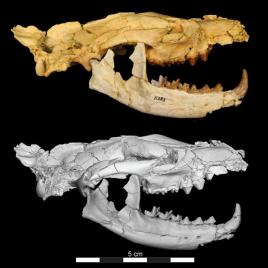A 34-million-year-old Egyptian fossil has identified a new member of the ancient carnivore species, hyaenodonts. Researchers gave the new species the name Masrasector nananubis, referring to Anubis, the dog-headed Egyptian god of mummification and afterlife. Masrasector nananubis were likely fast-moving, terrestrial meat-eaters about the size of a modern skunk. This is a significant discovery to […]
Tag: fossils
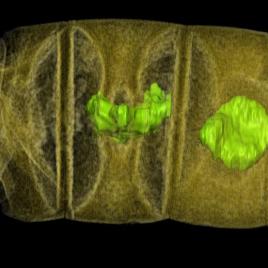
1.6 billion-year-old red algae found in fossils
World’s oldest plant-like fossils, which the scientists believe are ancient red algae, were discovered in sedimentary rocks at Chitrakoot in central India. It’s difficult to ascertain that the fossils are, in fact, red algae, since there is no DNA material present, but researchers say the structure of the cells are consistent with this ancient plant […]
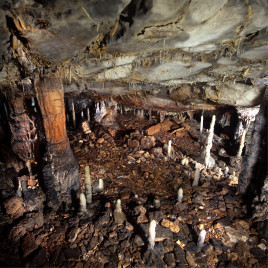
Human hunting contributed to cave lions’ extinction
One of the largest species of lions that ever lived, the Eurasian cave lion, became extinct around 14,000 years ago. For the first time, a new study finds a possible explanation for the decline of cave lions: hunting by Paleolithic humans. Cueto and colleagues examined nine fossilized cave lion toe bones from the Upper […]
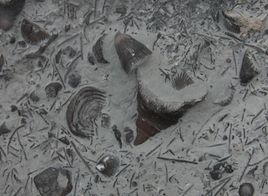
Fossil data can provide warning for the risk of extinction
There are numerous contributing factors in the extinction of ocean dwellers. These causes can be difficult to assess in a timely manner. A new study uses fossil data to establish a strong association between the history of geographic distribution of marine species and their extinction risk. Kiessling and colleagues suggest using fossil occupancy trajectories to […]
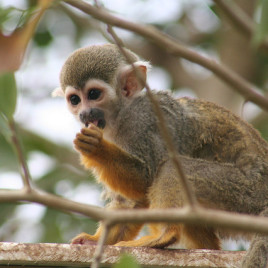
A missing piece in the North American monkey puzzle
Fossilized monkey teeth, found during the expansion of the Panama Canal, suggest that monkeys arrived in Central and North America much earlier than previously thought. Researchers believed that monkeys did not reach Central America until a strip of land between North and South America, called the Isthmus of Panama, formed 3.5 million years ago. But […]
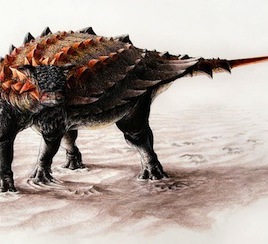
New “punk-rock” armoured dinosaur species described
Researchers have discovered a new species of ankylosaur in New Mexico that is related to others found in Alberta. The new species is called Ziapelta sanjuanensis and sports unusually tall spikes on the cervical half ring, a structure like a yoke of bone sitting over the neck, which looks a bit like a punk-rock collar. […]
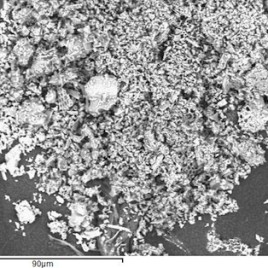
Can fossils survive cosmic impacts?
An experiment has shown that microscopic fossils can survive being fired from a gun and impacting at pressures up to 19 gigapascals (GPa). The fossils recovered by the researchers were smaller as projectile speed increased, however intact fossils were recovered from all trials. Researchers made the discovery by using fossilized diatoms – aquatic microorganisms with silica-based shells – […]
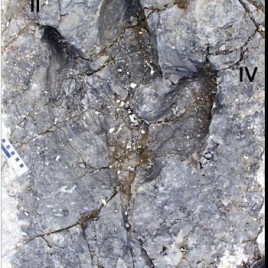
Tyrannosaurs travelled together
Well-preserved fossil footprints provide the first trackway evidence that Tyrannosaurs may have travelled in packs. The footprints were found in rocks from northeastern British Columbia and show three Tyrannosaurs travelling in the same direction at the same time, relatively close together. Until now, the evidence for the pack-like nature of Tyrannosaurs relied on the proximity […]
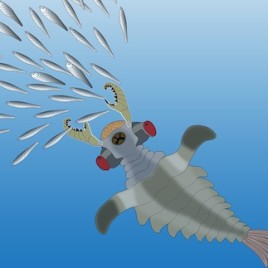
Ancient creatures display modern features
New, well-preserved fossils from China suggest that an ancient sea predator may share nervous system features with its modern descendants. Anomalocaridids are creatures from the Cambrian era – over 500 million years ago – first described from fossils found in the Burgess Shale, in British Columbia’s Yoho National Park. The new fossils from China describe […]
